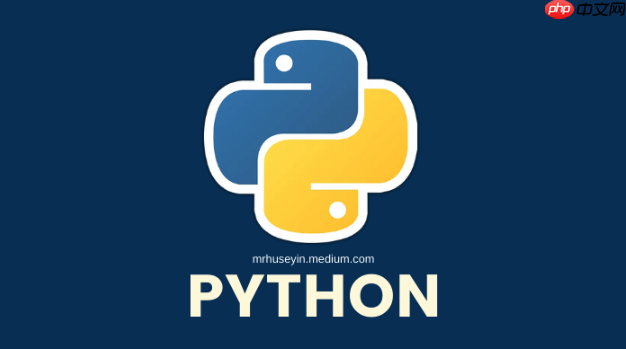多线程可提升物联网系统并发效率,适用于设备轮询、消息监听、数据聚合与指令分发;通过ThreadPoolExecutor管理线程池,控制并发数以避免资源浪费;使用threading.Lock保护共享资源如设备状态字典,防止数据竞争;结合queue.Queue实现采集、上传等线程间安全通信,解耦功能模块,提升系统稳定性与扩展性。

在物联网(IoT)系统中,设备数量庞大且需要实时响应,单线程程序难以满足高并发、低延迟的需求。Python虽然受GIL(全局解释器锁)限制,但在I/O密集型场景如网络通信、传感器读取、设备监控中,多线程依然能显著提升效率。合理使用多线程,可以实现多个设备的并发控制与数据采集。
物联网系统常涉及大量设备同时运行,以下场景适合使用Python多线程:
直接创建大量线程会导致资源浪费和调度开销。推荐使用concurrent.futures.ThreadPoolExecutor进行线程池管理,控制并发数量,提升稳定性。
from concurrent.futures import ThreadPoolExecutor
import time
<p>def control_light(device_id, action):</p><p><span>立即学习</span>“<a href="https://pan.quark.cn/s/00968c3c2c15" style="text-decoration: underline !important; color: blue; font-weight: bolder;" rel="nofollow" target="_blank">Python免费学习笔记(深入)</a>”;</p><h1>模拟网络请求或串口通信</h1><pre class='brush:python;toolbar:false;'>print(f"设备 {device_id} 执行操作: {action}")
time.sleep(1) # 模拟延迟
return f"{device_id} 完成 {action}"devices = [f"light_{i}" for i in range(10)]
with ThreadPoolExecutor(max_workers=5) as executor: results = list(executor.map(lambda dev: control_light(dev, "开启"), devices))
for res in results: print(res)
该方式避免了手动管理线程生命周期,同时限制最大并发数,防止系统过载。
多个线程可能同时访问共享资源,如设备状态字典、日志文件或缓存数据,必须保证线程安全。
threading.Lock保护临界区,防止数据竞争。
import threading
<p>device_status = {}
status_lock = threading.Lock()</p><p>def update_status(device_id, status):
with status_lock:
device_status[device_id] = status
print(f"更新 {device_id} 状态为: {status}")</p>任何线程调用update_status时都会独占访问,确保数据一致性。
在复杂系统中,不同线程承担不同职责(如采集、处理、上传),使用queue.Queue可安全传递数据,解耦模块。
import queue
import threading
import time
<p>data_queue = queue.Queue()</p><p>def sensor_reader(device_id):
for i in range(3):
data = f"{device_id}<em>data</em>{i}"
data_queue.put(data)
print(f"采集到: {data}")
time.sleep(0.5)</p><p>def uploader():
while True:
data = data_queue.get()
if data is None: # 结束信号
break
print(f"上传数据: {data}")
time.sleep(0.3)
data_queue.task_done()</p><h1>启动上传线程</h1><p>upload_thread = threading.Thread(target=uploader, daemon=True)
upload_thread.start()</p><h1>多线程采集</h1><p>threads = []
for dev in ["sensor_A", "sensor_B"]:
t = threading.Thread(target=sensor_reader, args=(dev,))
t.start()
threads.append(t)</p><h1>等待采集完成</h1><p>for t in threads:
t.join()</p><h1>发送结束信号</h1><p>data_queue.put(None)
upload_thread.join()</p>该模型易于扩展,支持动态增减采集设备或上传通道。
基本上就这些。合理运用多线程,配合线程池、锁和队列,能在Python中高效实现物联网设备的并发控制,提升系统响应能力与稳定性。
以上就是Python多线程在物联网中的应用 Python多线程设备并发控制技巧的详细内容,更多请关注php中文网其它相关文章!

每个人都需要一台速度更快、更稳定的 PC。随着时间的推移,垃圾文件、旧注册表数据和不必要的后台进程会占用资源并降低性能。幸运的是,许多工具可以让 Windows 保持平稳运行。

Copyright 2014-2025 https://www.php.cn/ All Rights Reserved | php.cn | 湘ICP备2023035733号